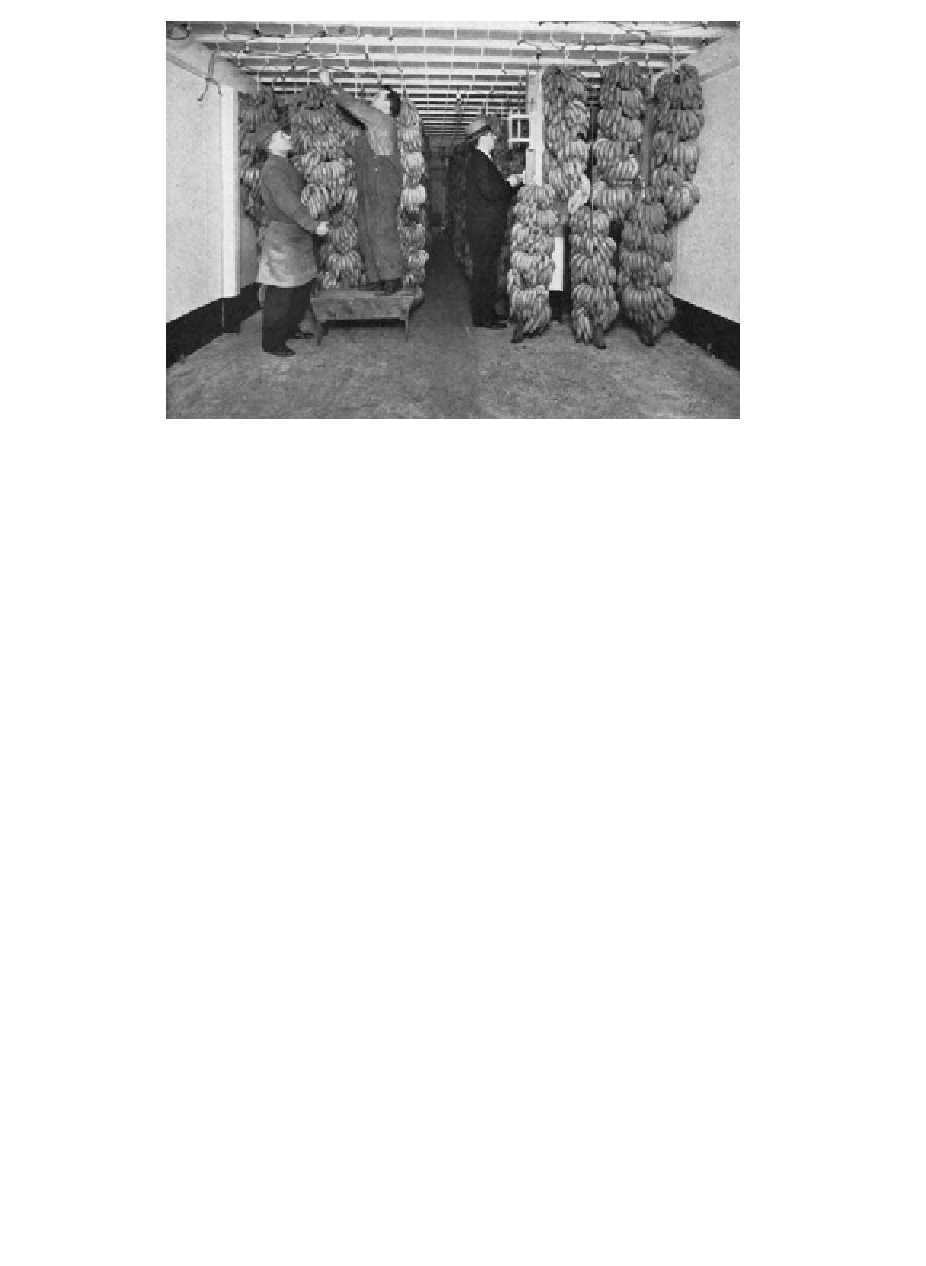Agriculture Reference
In-Depth Information
figure 2.6.Fruitjobbersworkinginabananaripeningroom(c.1930).
UnitedFruitCompany,''AboutBananas''(Boston:1931).
fruit jobbers (mostly men), who occupied the space between production
and consumption. Both quality standards and processing techniques (i.e.,
storage and handling) evolved around Gros Michel fruit. The failure of
the 1929 marketing survey to generate any conversation about other vari-
eties strongly suggests that the many kinds of bananas cultivated in the
tropics did not exist—at least not as commodifiable things—in the minds
of most consumers. Efforts to introduce a ''new'' variety such as Lacatan
therefore faced an uphill battle because most wholesalers would have little
interestinabananathatseldomproducednine-handedbunches,required
modified storage facilities in order to ripen, and had a tendency to come
crashing down to the shop floor. Even if the fruit companies were to offer
Lacatan fruit at a reduced price on wholesale markets, it would have faced
competition from discounted Gros Michel bananas.
Of course, the fact that just three companies controlled some 75 per-
cent of the national market left jobbers with fewoptions when buying ba-
nanas in the first place. Presumably, the fruit companies could have com-
pelled wholesalers to accept the Lacatan (or some other disease-resistant
variety)hadtheybeencompelledtodoso.However,thehandsomeprofits
enjoyed by the fruit companies during the 1920s must have satisfied most
investors. The United Fruit Company's cash reserves increased from $11.2
million in 1899 to more than $50 million in 1918. Net profits soared to
more than $33 million in 1920, a sixfold increase over earnings in 1913.
125

